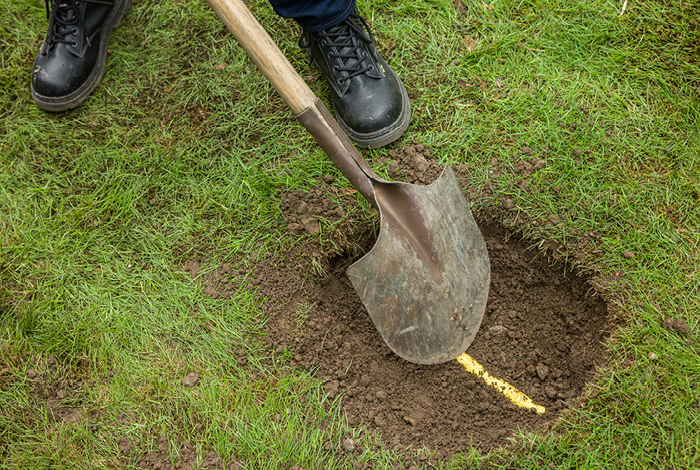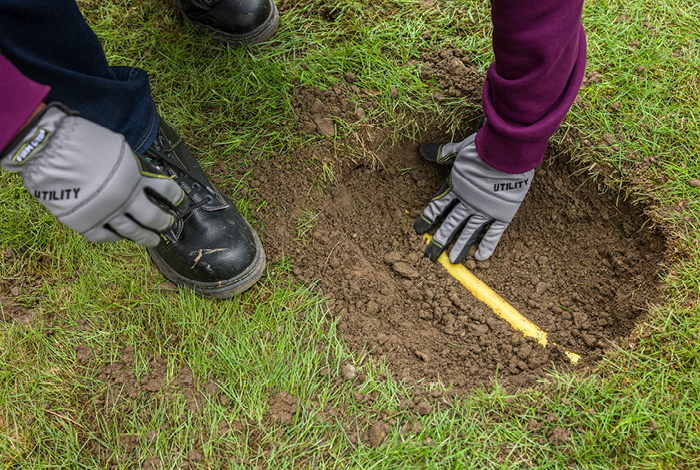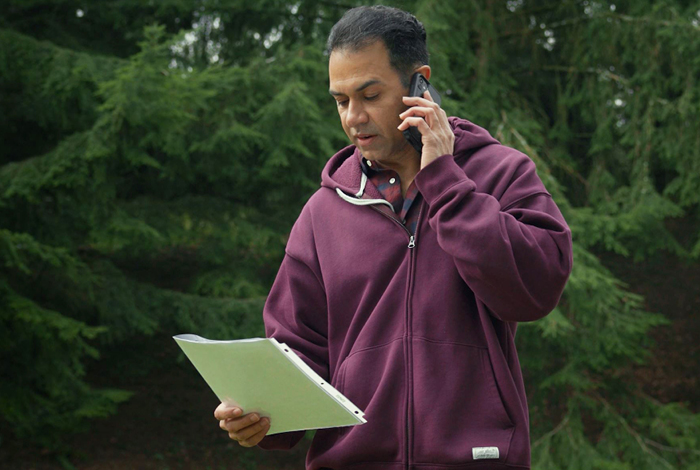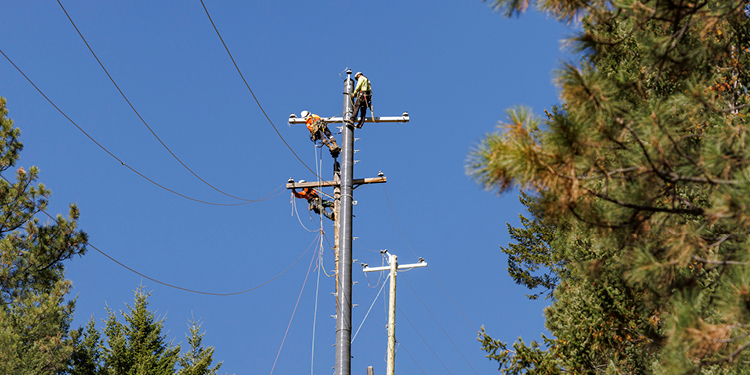Watch out for these 8 mistakes to avoid damaging a gas line
May 3, 2022
Why do so many underground utility lines, like gas lines, get hit every year? It's a great question, and our damage investigation team has seen it all, so we have the answers. Check out these top common causes of gas line damage so you can avoid safety hazards and costly repairs:
1. You assume utility lines are always buried several feet underground.

According to WorkSafeBC, some utility lines are buried less than 12 inches from the surface. Why aren't they deeper? Many of them have been buried for decades, and multiple things can remove soil from above the lines, like erosion over time, landscaping projects and floods. Help avoid dig mistakes with our safe digging guidelines.
2. You don't know that you need to contact BC 1 Call before ground disturbance activity.
You might be aware that you're required by law to click or call BC 1 Call before digging, but you assume it's only for big excavating projects, not for minor yardwork. This common misconception gets people into trouble! BC 1 Call defines ground disturbance as "any digging, blasting or cutting resulting in movement or disturbance to the ground."
Imagine while preparing for a lovely backyard wedding, you're driving a few spikes in the ground to set up a tent—and then smelling the rotten egg odour of natural gas where the spike just hit an underground line. Believe it or not, it's happened. And while our FortisBC gas line repair team would be delighted to attend your wedding, we're sure that's not the kind of excitement you want on your big day.
3. You don't realize how easy it is to damage utility lines with shovels and other small tools.
Burying a beloved pet is hard enough as it is. But picture this: while digging a hole in your backyard to place your dear departed pet to rest, you hit a gas line and then call 911, bringing blaring fire trucks and FortisBC crews to your home, and upsetting your neighbours. Yes, this actually happened to one poor family, who didn't think a regular old shovel could cause utility line damage and require them to pay a $500 repair bill.
While older gas lines are made of steel, modern lines are made of plastic, which has many advantages but is more prone to damage. Other utility lines can be easier to damage, like fibre-optic cables which can be very costly to repair. Remember: it's not just big construction equipment that can hit underground utility lines. Any tool going into the ground could damage a line.
4. You assume the gas line was installed in a straight line from the street to your meter.
While in some cases this is true, sometimes utility lines will need to go around tree roots, large boulders or other things that aren't visible above ground. Don't make dangerous assumptions.
5. You assume your contactor is clicking or calling BC 1 Call.

If you hire a contractor to do some landscaping or install a patio or fence, you might think they're taking care of all the safety precautions, like contacting BC 1 Call. Unfortunately, contractors cause about two thirds of gas line damages—they're often in a hurry to complete projects, or they're not fully aware of the laws or possible risks.
You could be held responsible for utility line repairs on your property, so ask to see your contractor's BC 1 Call ticket, and ensure they've followed directions to find the underground line(s) before they begin work.
6. You don't want to wait for BC 1 Call to provide you with line location information.
After you contact BC 1 Call, it takes up to three business days to get the information from each utility company that has lines buried in your yard or construction site. If you're in a rush, that might seem like too long to wait. Keep in mind that if you hit a utility line, your project could be shut down for days for repairs and investigations. Plus, you are not only creating a potential safety hazard but could also be responsible for repair costs and possible fines from Technical Safety BC. Is it worth the risk?
7. You don't hand dig to expose the line(s) in multiple locations.

When you contact BC 1 Call, you'll get a map and detailed instructions that tell you where the lines are, and to carefully hand dig to expose them in multiple places so that you can easily avoid the lines when you're working on your project. Sometimes people skip this step, preferring to simply use the location information to mark above ground where they think the line is supposed to be.
This is a dig mistake, because you might be reading the map wrong, or in some rare cases, the information you get could be incorrect. The instructions are given for good reasons, so please follow them!
8. You find the utility line locating instructions confusing or can't find the line(s) where the map says they should be, and you start your project anyway.

The information you get after contacting BC 1 Call could be coming from several different companies, if you have underground lines for electricity, internet, gas, street lights or traffic light sensors on your property. In some cases the information could be quite old and challenging to make sense of.
And, as noted above, in some cases you won't find the utility lines where you expect them to be. Maybe you're misinterpreting the information you got, or maybe the map provided by the utility company is incorrect, although this is rare. Either way, do not simply go ahead with your project.
After contacting BC 1 Call, if the information you got is confusing or you can't find a gas line based on the information we provided, call us at 1-888-224-2710. We'll help you make sense of the information, and in some cases we'll come out as soon as possible at no cost to help you find the line. When in doubt, reach out—we're here to help keep you safe.
How to avoid dig mistakes
So now you know all the ways you can go wrong—but we can easily sum up the right way to dig:
- click or call BC 1 Call at least three business days before you start your project
- follow directions carefully, and keep them handy
- if you're confused or can't find a gas line, read our safe digging guidelines or call us for help
If you need more inspiration, we've got 5 cautionary tales to ensure safe digging, and 7 damaging myths about safe digging.



